APUSH Chapters 1-8 Sources
1/20
Earn XP
Description and Tags
Image, Context, and Significance
Name | Mastery | Learn | Test | Matching | Spaced |
|---|
No study sessions yet.
21 Terms

Context: The pestle is corn because the Incas grew corn as a major food source within their civilization and it led to their growth. This is when the Native American civilizations had some of the largest cities in the world. This was before the Columbian exchange.
Significance: The significance is that the pestle shows how corn permeated every aspect of Native American society, and its importance to one of the largest civilizations at the time. This mortar and pestle was probably used to grind corn into corn flour.
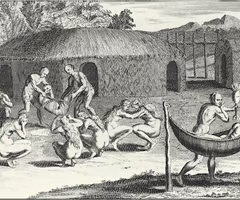
Context: This is an engraving of a Native American burial service that occurred after the Europeans first came into contact with the New World. The Indians were dying of diseases brought by the Europeans in the Columbian Exchange, of which they had no immunity to. This was the beginning of the mercantilist/colonial expansion by the European powers into the New World.
Significance: The significance is that this shows how Native Americans were ravaged by European diseases, which killed between 50-90% of their population. This allowed for Europeans to successfully stave off Native attacks and successfully establish settlements. When the natives died, the Europeans turned to Africa to replace the free labor provided by the Natives.

Context: This drawing depicts Hernando Cortez and Malinche, both of whom led to the fall of the Aztecs. Malinche was the Indian slave of Cortez that acted as translator for Cortez when he came into contact with the Aztecs and allowed him to win the trust of them. This is one event in the process of Spanish conquistadors conquering and settling South and Central America by destroying the large native civilizations.
Significance: The significance is that not only were the largest native American civilizations destroyed, but their culture was also wiped out. Between disease and Spanish attempts to convert them, the variety of Native American cultures could not survive. This also allowed for easy Spanish settlement of South and Central America and the conquered Aztecs and Incas acted as large amounts of labor in the silver mines and led to other countries wanting to colonize when they saw the vast wealth of the Spanish.
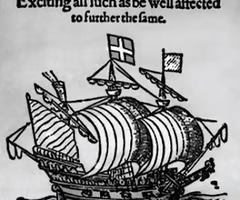
Context: This ad is posted only a few years after the founding of Jamestown. It is by the Virginia company which is an example of the establishment of joint-stock companies. This was the beginning of the building of the British colonial empire.
Significance: The immediate significance is that it shows how Jamestown was struggling in its early years before the introduction of tobacco. The introduction of tobacco led to the success of the Virginia colony and eventually led to the creation of a plantation-based economy in the South.
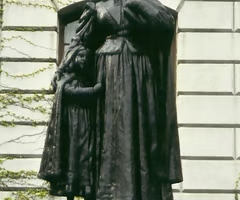
Context: The statue depicts Anne Hutchinson who held unorthodox views of antinomianism. She was one of many who was banished from Massachusetts for their religious views. Other colonies in New England were being built by those banished from Massachusetts, as well as those whose religious views contested those of the Congregationalist Church.
Significance: The significance is that this shows how the Puritans only believed in religious freedom for themselves and didn't tolerate those who didn't agree with them. Roger Williams, who was also banished, founded Rhode Island as a place of religious freedom. The very influential Puritan beliefs in New England led to the distinct culture of the area, including the strong work ethic and New England conscience.
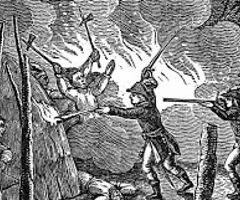
Context: This image depicts the attack on the Pequot Fort during the Pequot War in 1637. The Pequot war was one of many wars in the 17th century where Indians tried to fight the New England colonists and prevent them from settling. These tensions culminated into King Philip's War in 1675, the last attempt for Native Americans to fight back against the colonists.
Significance: The significance of the Pequot War was that it allowed for the founding and settlement of Connecticut. This was one of many other battles between New England colonies and the native Americans. All these battles weakened the ability of the Indians to stop the colonists, and King Philip's War was the last major effort to do so.
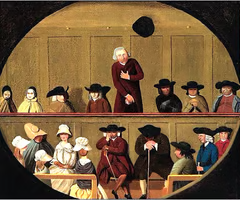
Context: The picture depicts a Quaker meeting, one of the few meetings in which women could speak. The other picture is a depiction of Penn's Treaty. It was made by William Penn who founded Pennsylvania.
This is part of the establishment of Pennsylvania as a haven for Quakers and non-English settlers. Pennsylvania would become the most equal of the middle colonies. The Quaker meeting is a form of representative government within the colonies and an especially liberal form within the Middle colonies.
Significance: The significance is that this led to the creation of the most egalitarian state and eventually the abolition movement which was exceptionally within Quakers. The other forms of town meetings in other states helped prove the concept of self-rule to the colonies themselves.
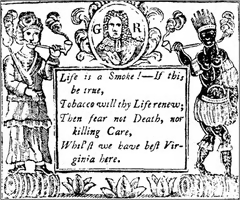
Context: Tobacco products were the first to use brand name advertising. This is part of the development of a cash crop economy in the South. Tobacco products and other raw materials (and cash crops) were traded in the triangular trade with Britain as part of its mercantilist policy; they were the main source of income for southern states.
Significance: The significance is that this shows that there were other brands of tobacco and that the market was saturated by big brands. Such a large tobacco industry required a lot of slave labor, which caused a division between the North and South that led to internal struggles in early America. The mercantilist policies of the British led to the Revolutionary War, as the Americans felt that they were being unfairly restricted and losing the rights of Englishmen.
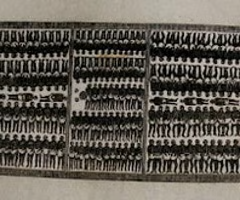
Context: This was for the Middle Passage, the horrifying leg of the journey between Africa and the Americas. This was part of the Triangular Trade where raw materials, slaves, and finished goods were traded between Britain, the Americas, and Africa. The extent to which slaves were imported allowed for the flourishing of plantations within the South, creating a very distinct culture from the North. Enslaved people were treated and sold as property.
Significance: The significance of this blueprint is that it tells us how the slaves were treated as cargo and the traders were trying to pack them in the most in order to get the most money from each trip. The grueling efficiency of the slave trade allowed for the south to continue relying on slavery after slave imports were banned in 1808. This was supported by the Triangular trade as the South had a near monopoly on tobacco in Britain, along with other foodstuffs and resources.
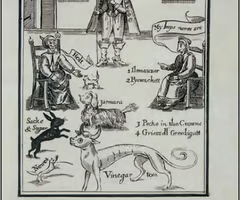
Context: This document depicts Matthew Hopkins the Witchfinder. This was part of the greater Salem-Witch trials in New England. The Salem-Witch trials were caused by the burgeoning market economy, transitioning away from subsistence farming.
Significance: The significance of this is that it shows that the witch trials became so commonplace that it was a profession. The witch trials themselves were opposition against the widening economy and social structure from the conservative Puritans and farmers. The transition to a market economy allowed New England to develop commercial centers and cities, unlike the South.

Context: This image is a map that shows the ethnic diversity within the colonies just before the start of the Revolution in 1775. Because a lot of the non-English people were near the frontier, the cultural diversity contributed to westward expansion. The large cultural diversity contributed to the idea that America is a melting pot.
Significance: Because of the divergent ethnicities, it was hard to unite the colonies to fight against the British and many of the non-English were loyalists. The efforts of the Scots-Irish along the frontier led to Indian uprisings there and also contributed to them siding with the British as a hope to stave off the white settlement. The cultural diversity within America led to large-scale immigration there by other white minorities in the mid-19th century.

Context: This document depicts an inn where people debate politics. These inns were part of greater loosely organized colonial resistance to British rule such as the Sons and Daughters of Liberty. As these resistance movements grew, they unified America and led to the development of a common American identity.
The inns provided places to discuss politics and gossip and cultivated patriotic feelings as more people discussed with each other the wrongdoings of the Crown. The inns and taverns also served as meeting places for political leaders, the Committees of Correspondence, and other patriot organizations.
Significance: These organizations demonstrated patriotism throughout the colonies and unified the patriot in New England with the patriot in the South. These served as important pipelines of information during the revolution, after which we would see the American identity solidify in its government.
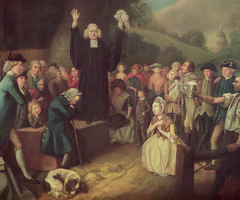
Context: This image depicts George Whitefield who spread the Great Awakening throughout the colonies. The Great Awakening was the religious revival throughout the colonies in the 1730s and 1740s. It contributed to the unification of the colonies and the creation of an American identity.
Significance: The significance of the document is that it shows how people of all classes and genders were inspired by Whitefield. The spread of the Great Awakening contributed to the undermining of the old clergy, and overall undermining authority. This idea integrated into the American identity and kindled the Revolutionary ideals of opposing the King and Parliament.
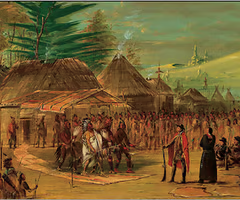
Context: This document shows the Indians receiving Robert de La Salle, the French explorer who traveled the Great Lakes and down the Mississippi. He was part of the establishment of a French empire in North America. Conflict between the French and English over the Ohio River Valley sparked the French and Indian War.
Significance: The significance of the document is that it shows how the French were able to establish better ties with the Native Americans than the British. This meant that the conflict over the Ohio River Valley that was the French and Indian War included Native Americans as they fought with other tribes with help from the Europeans. The French and Indian War eventually led to the elimination of the French from North America and the Revolutionary War.

Context: This is a political cartoon by Benjamin Franklin, prompting the colonies to unite. The political cartoon was around the time of the Albany Congress during the French and Indian War. The Albany Congress was part of the unification efforts before the Revolutionary War and implanted the idea of self-rule within the colonies.
Significance: The significance of this document is that it shows how even when fighting with the British, the colonies weren't able to unite. The Albany Congress showed that there was support for unification but just not an agreement on the details of it. This agreement for unification contributed to the development of a single American identity.
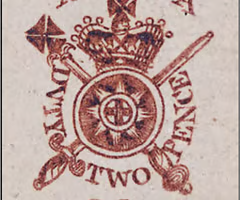
Context: This document represents the Stamp Act of 1765, one of many other taxes imposed on the colonies. This was the second of many other acts that Parliament would pass against the colonies. These acts, paired with some other events, were reasons for the colonists to revolt.
Significance: The significance of the Stamp Act is that it was one of the most major offensives to the colonies, because the violators were denied right to trial by jury. The continuation of the imposing of taxes led to the angered cry of 'no taxation without representation' giving them a principle with which to base their grievances on. This led to an initially weak federal government under the Articles of Confederation, one that couldn't collect or enforce taxes.
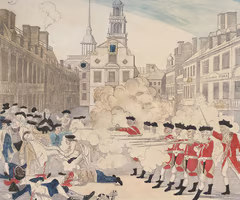
Context: This is a piece of propaganda that describes the Boston Massacre. This is when there was very little anger against Parliament and the King. This was part of the road to revolution.
Significance: The significance of the document is that there needs to be some propaganda in order to garner support for the patriot cause. There was very little anger against the king because it had been 5 years since the Stamp Act.
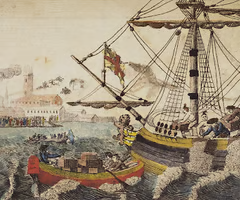
Context: This image depicts the Boston Tea Party. This follows the Tea Act where Parliament continued to tax tea but at a cheaper price. This was part of the road to revolution and the increasing sentiments to revolt against the Crown.
Significance: The significance of the Boston Tea Party was that it showed that the colonists weren't mad about the price of tea but that they were being taxed without representation. The Tea Party led to the Intolerable Acts which exceptionally angered the people of Massachusetts and gave reason for the other colonies to join the cause. These feelings culminated in the Revolutionary War.
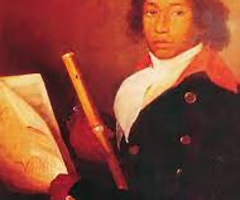
Context: This image depicts how black men were fighting in the Revolutionary War as part of Lord Dunmore's Proclamation. Many black people were enlisting for the loyalist cause. This is part of the greater conflict of slavery and the achievement of racial equality within America.
Significance: The significance of black people joining the Revolutionary War is that the South became patriots as British rule would've led to the freeing of their slaves. Threats to the establishment of slavery in the South would continuously anger them. These feelings would eventually culminate with the Civil War.
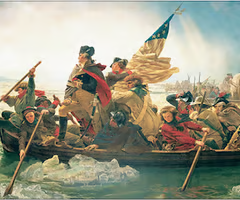
Context: This is George Washington crossing the Delaware in 1776. This was just before the Battle of Trenton, an American victory. This was after a series of losses for America when the patriot cause was losing support. This was the beginning of America getting its recognition as its own nation.
Significance: The significance of Washington crossing the Delaware is that it shows how desperate Washington was for a victory and the accompanying morale boost. The victory at Trenton gave this boost in morale and led to a series of victories, including the Battle of Saratoga. The Battle of Saratoga allowed America to get an alliance with the French, which allowed them to win the war.

Context: Joseph Brant was the Mohawk tribe leader who allied with the British and fought frontier wars against the Americans. Many other Indian tribes fought allied with the British as the Americans labelled them as savages and instigated conflict. This is part of many other struggles the Native Americans had to stop the Americans from encroaching on their land.
Significance: Joseph Brant is important because by allying his tribe with the British, he broke apart the Iroquois Confederacy when he fought in the Battle of Oriskany. He was one of many Indians who tried to unite multiple tribes in order to form a force that could withstand and negotiate with the Americans. Eventually the Indians could not save themselves from the Americans and were moved westward along the Trail of Tears.